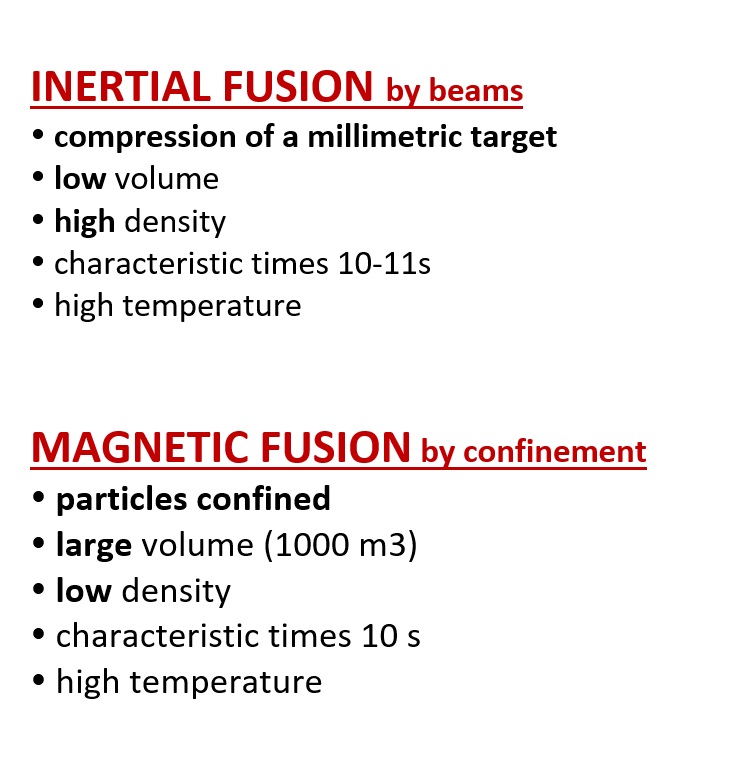Nuclear fusion
What is this?
Nuclear fusion is a process for producing energy from the nuclei of atoms, , it is the same phenomenon that occurs in the heart of stars.
For example, our sun fuses about six hundred million tons of hydrogen per second, generating in one second as much energy as humanity uses in a full year.

Under what conditions does fusion occur?
This happens in extreme conditions, it takes temperatures of the order of one hundred million degrees. For fusion to generate much more energy than is needed to cause it, it is imperative to reach these temperatures.
The difference between the energy produced and contributed is called “the gain” and if it is greater than one, then the fusion will have released enough energy.

What methods are used to reproduce fusion?
There are two methods: magnetic confinement (which uses powerful magnets to block the plasma for a very long time) and inertial confinement (very short and intense pulse reactions).

What were the results of the “gain” in recent years?
The record by magnetic confinement was 0.65 in the United Kingdom in 1997. The NIF (inertial fusion facility) had meanwhile obtained 0.7 in August 2021. But recently, this system has just reached 1.5 (energy of 2.1 megajoules thanks to 192 lasers).

Fusion for our future, fact or fiction?
This method could be considered as a long-term alternative, but there is still a long way to go.
Indeed, it would take a gain greater than 100 to produce electricity at an acceptable cost. But the implementation of the NIF requires a lot of time and preparation while only a few shots per week can be carried out.
To be operational in the long term, it would have to have a frequency of ten shots per second over 365 days.

Another alternative would be to have the necessary fuel. To achieve fusion, two isotopes of hydrogen would have to be combined: deuterium (very abundant on our planet) and tritium (radioactive and having a lifespan of one, two or three years).
The global stock of tritium is estimated at around 30 kg, whereas a fusion reactor would require 90 kg of tritium per year to produce 500 MW of electricity.


